Campus Connectivity Plan
The University of Salford’s Campus Connectivity Plan (CCP) is the major redevelopment of its research, teaching and public spaces and is the most ambitious development of its estate to date.
The expansion is driven by the University’s goal to unite education, industry and innovation. A technical skills centre and a new health building are now being built, which will tackle workforce shortages in the health and science sectors, and a world-leading acoustics lab is in planning stages.
Sustainability is a key priority and the University is committed to meeting net zero carbon emissions by 2038. All new buildings will be fully electric and low-carbon and will be targeting BREEAM Excellent plus WELL Gold in some cases.
As part of the wider Crescent Salford Masterplan the University’s development will help to deliver up to 7000 full time jobs and an estimated annual Gross Value Add of £350m by 2040, over the lifetime of the Crescent regeneration * (figures taken from Crescent Prospectus FINAL and Crescent Salford website).
If you have any queries or feedback on our Campus Connectivity Plan you can reach the team on estates-ccp@salford.ac.uk.
Our current developments

Acoustics building
Plans have been submitted for a new state-of-the-art Acoustics Building which would bring world-class research facilities to Crescent Salford’s innovation zone. Housing the research, commercial and teaching activities of the University of Salford’s Acoustics Department, the 1,300m2 building would represent the second staging post in the creation of Crescent Innovation following work commencing on Salford Rise in September.
Find out more here: Acoustics building | University of Salford
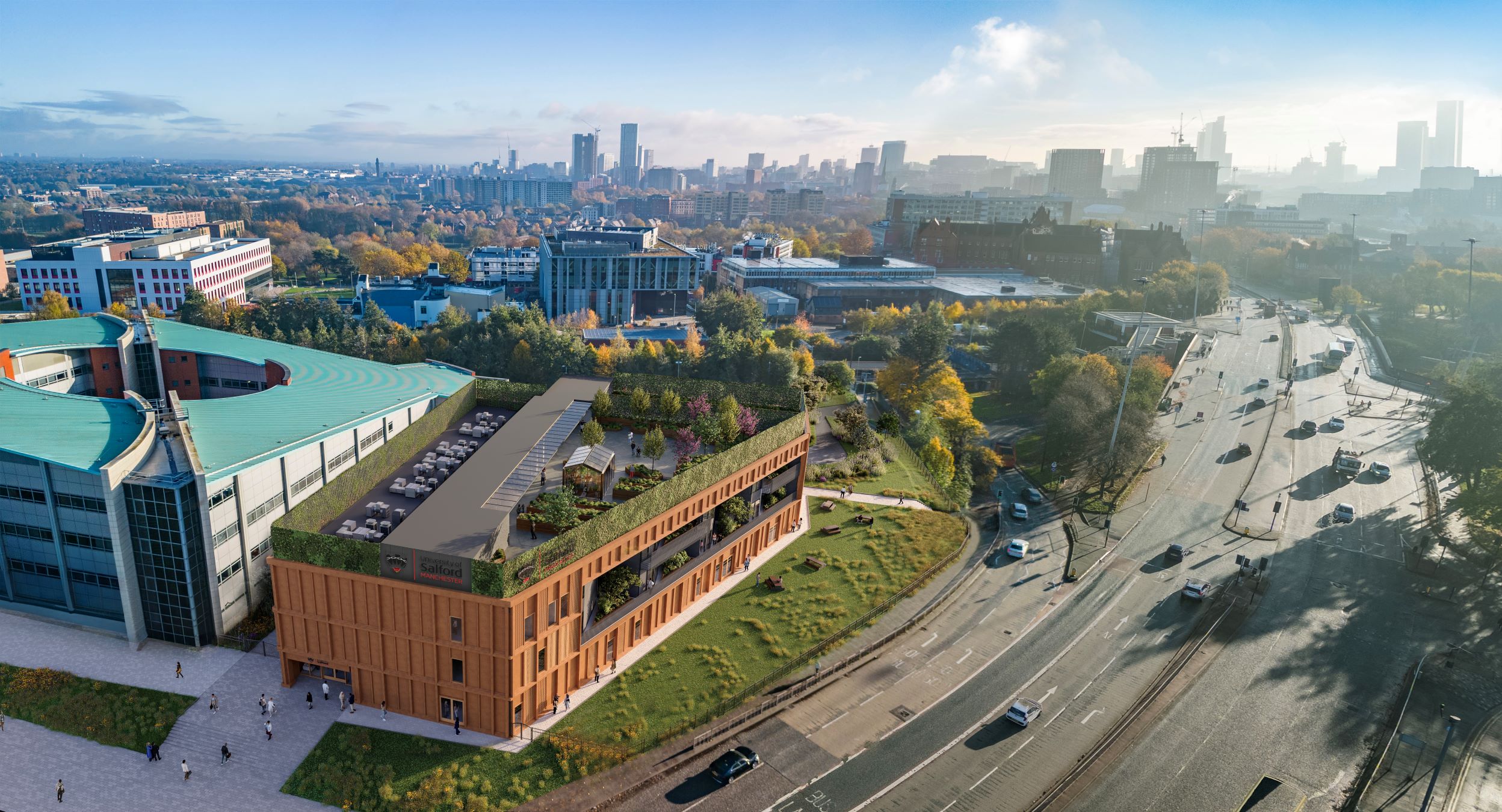
Health and Wellbeing building
The new site will offer a health and wellbeing hub at the heart of the university estate.
Our new building is going to offer world class teaching, practice and research facilities in clinical-quality spaces for some of the university’s most popular healthcare courses. It will also offer public services for the community.
The new centre will be the home to occupational therapy, sport science, podiatry plus prosthetics and orthotics studies and research. A Gait Analysis lab will be situated on the ground floor.
Find out more here: Our new Health Building | University of Salford
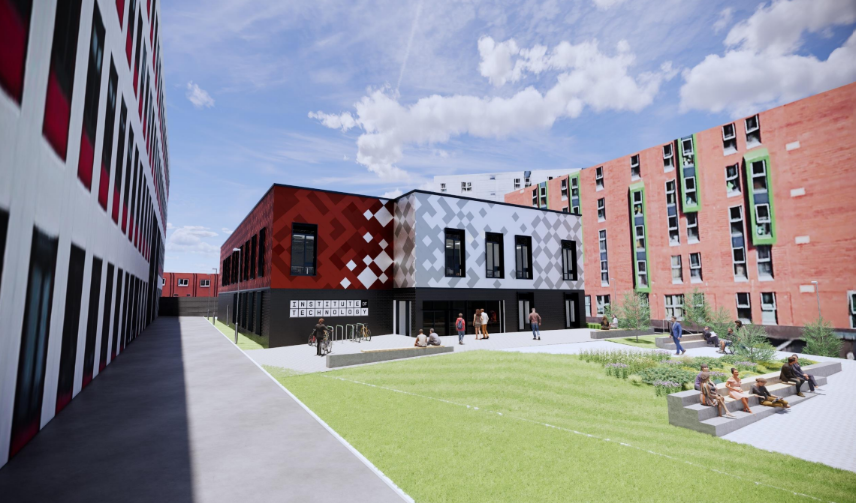
Greater Manchester Institute of Technology (GMIoT)
The GMIoT offers higher-level, real world technical education and training across the construction, engineering, computing, creative media, business and health sciences sectors. The University and education providers are already offering courses via the GMIoT, and capital funding is now being invested at Salford to create a new flagship building.
The building will be low carbon and feature a state of the art green roof alongside a green wall supported by rainwater harvesting.
Importantly, the GMIoT will deliver training and employment opportunities that are co-created with employers and specifically designed for the careers of the future as well as responding to current workforce needs.
The GMIoT is an exciting partnership led by the University of Salford with Wigan and Leigh College as the lead FE partner, bringing together several colleges and employers in the city region.
Find out more here: Technical skills building gets the green light in Salford | University of Salford
Salford Business School
Plans are underway to create a new home for our Salford Business School, combining digital connectivity, innovative teaching and smart and immersive technologies. With a range of flexible, adaptable spaces tailored to the different needs of our stakeholders, the Business School Building will be seen as an engaging destination and key regional place maker for students, colleagues, industry and civic engagement.
We’re growing fast
Over the last few years, we are proud to have constructed a range of pioneering, people-focused buildings from the ground up. Now part of the fabric of our campus these spaces continue to be a space for learning, innovation and ideas.
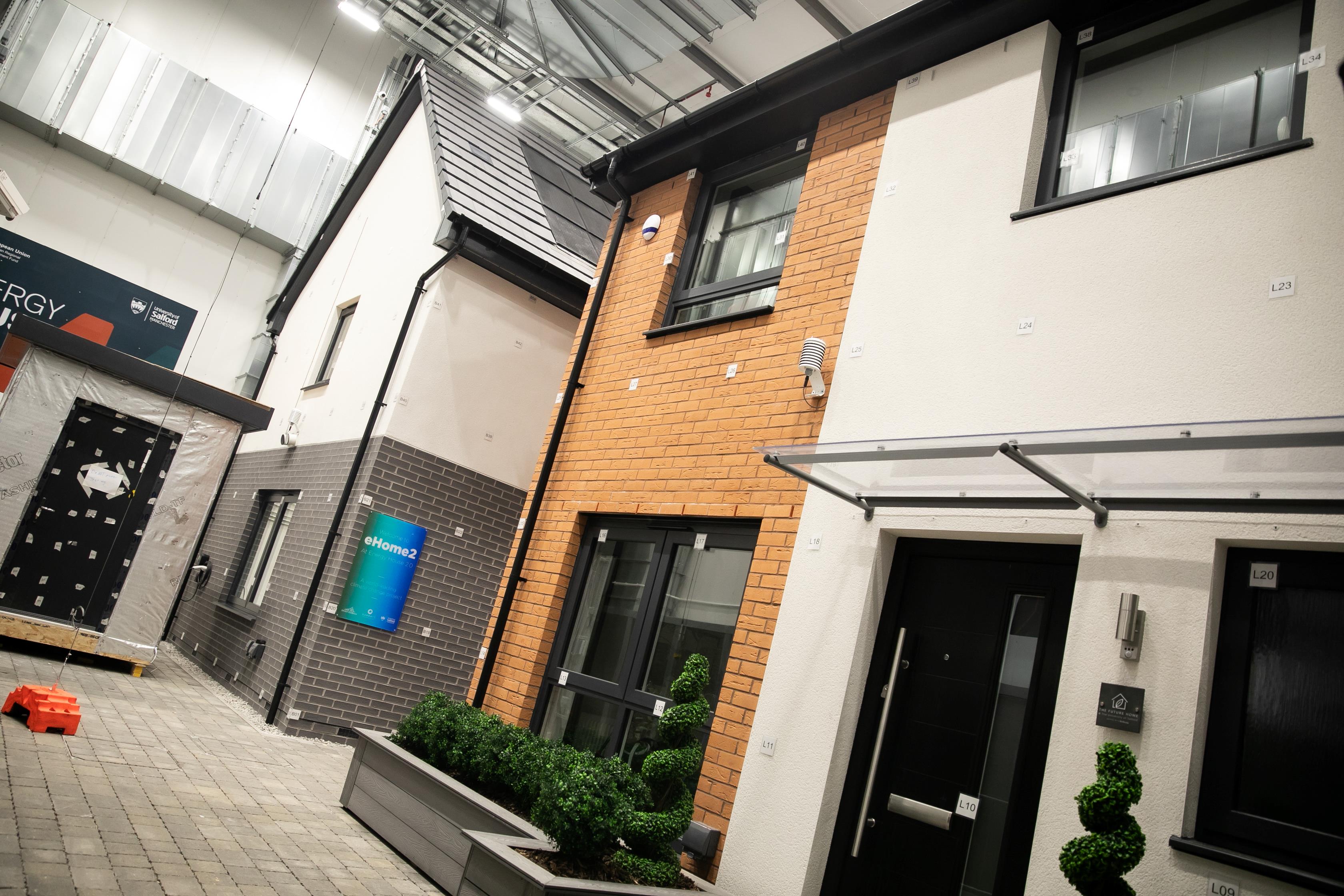
Energy House 2.0
Our award-winning Energy House 2.0 was completed in February 2022 and is the largest research facility of its type. Inside, there are two environmental chambers each able to accommodate two detached houses and under controlled conditions, recreate a wide variety of weather conditions with temperatures ranging between -20˚C to +40˚C and simulated wind, rain, snow and solar radiation. This unique facility will play a key role in accelerating the progress towards low carbon and net zero housing design and builds upon the success of the original Energy House 1, which was opened in 2012.
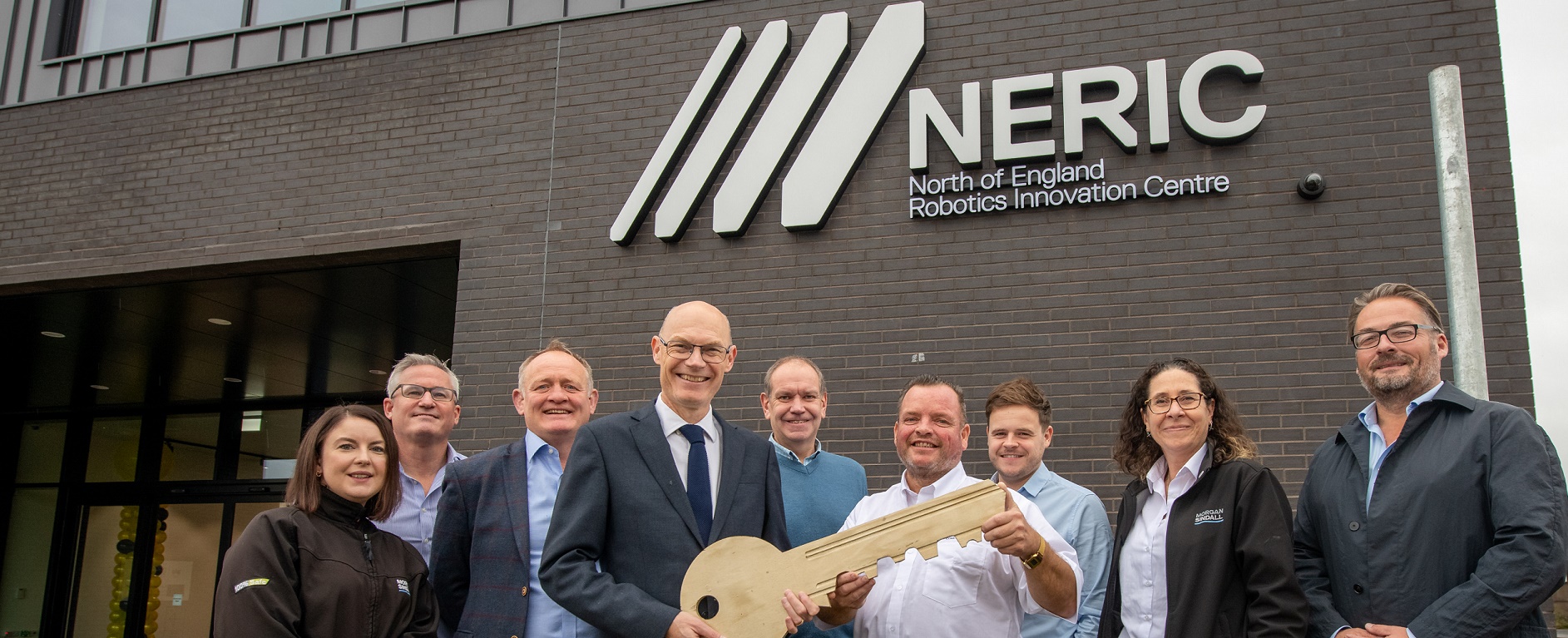
North of England Robotics Innovation Centre (NERIC)
Our £16 million North of England Robotics Innovation Centre officially opened its doors in 2022. The facility is part funded by the European Regional Development Fund, with additional support from Research England, and serves as a hub for small to medium-sized industries (SMEs) looking to design, test and validate innovation in this rapidly growing area. In line with our commitment to reducing carbon emissions, NERIC is an all-electric building.
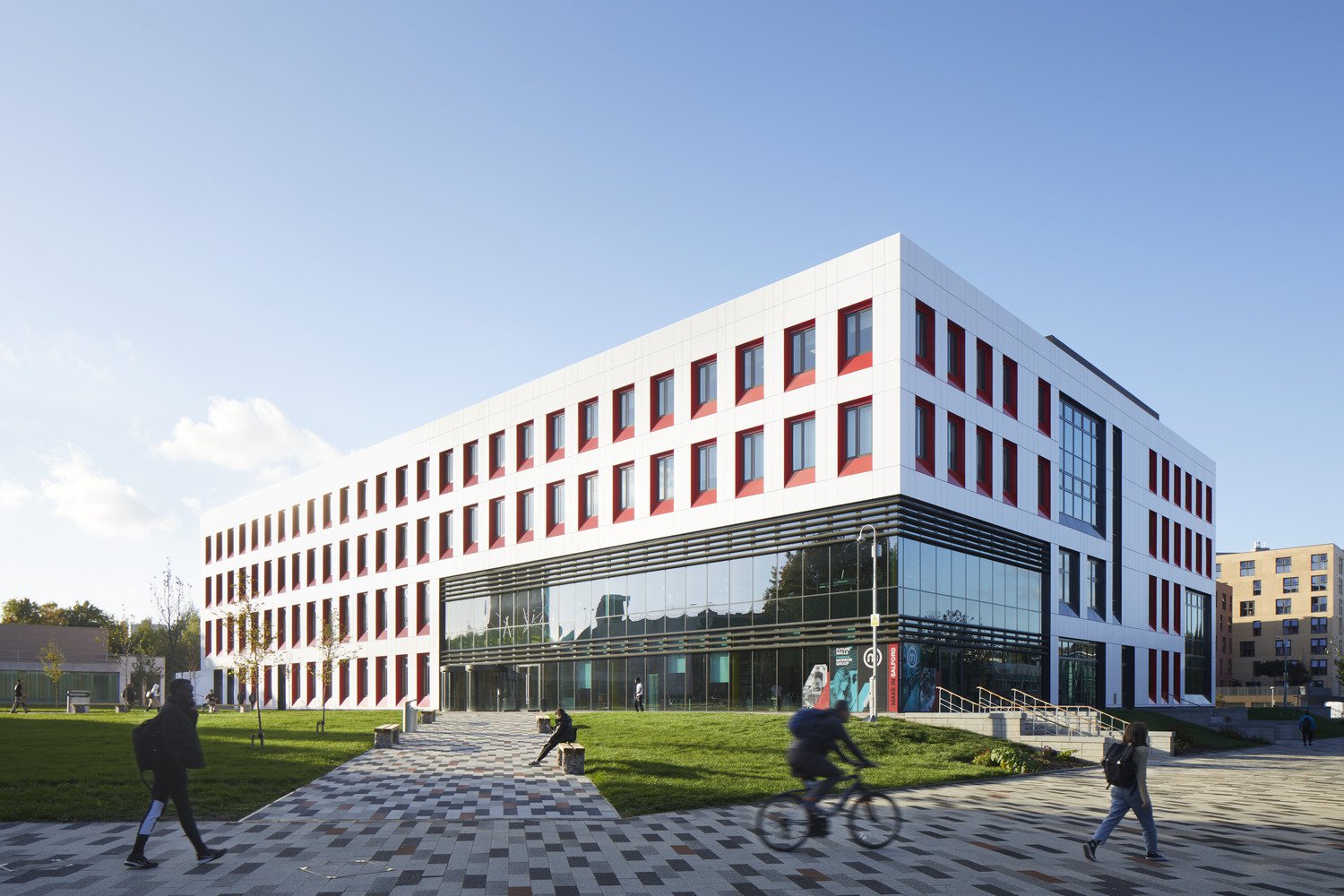
School of Science Engineering and Environment (SEE) building
From its inception in 2017, our 15,300 sq.m SEE building successfully navigated the COVID-19 pandemic, to open on schedule in September 2022. A multidisciplinary hub for teaching, research and industry collaboration, the building is home to colleagues, students and researchers in our School of Science, Engineering and Environment. Project architects Sheppard Robson drew inspiration from our industrial heritage and landscape to create a building with an external character that offers a modern take on surrounding Victorian warehouses.
Connecting our campus
Our Campus Connectivity Plan is part of a wider Crescent Development Framework, a long-term vision for Salford over the next 20 years. The Framework is being developed ourselves and our partners Salford City Council and the English Cities Fund (ECF). You can learn more about the partners and the wider plans by visiting Crescent Salford.
Projects currently in the Crescent Framework pipeline include:
Salford Rise
This key infrastructure and public realm project will remove physical barriers between the communities to the north of the Crescent area, replacing them with walking and cycling routes focused on accessibility and active travel, significantly improving connectivity between these communities and Crescent Salford. In addition, there will be large areas of new, high-quality green spaces, trees, planting and public squares for pop-up events and festivals.
At the heart of the ambitious regeneration of Salford Crescent is a near five-acre elevated walkway spanning Frederick Road which will enhance connectivity and act as a key gateway between the University of Salford’s campus and the Crescent innovation zone. Set to stand at 11 metres wide and 220 metres long, it will be a green and safe haven for pedestrians and cyclists, encouraging active travel and facilitating improved collaboration across the development.
Construction work will begin on Salford Rise in early 2025 and is expected to complete in summer 2026.
Crescent Innovation
Creating a high-quality innovation ecosystem around the University, Crescent Innovation will build on our existing world-class research capabilities and help drive further economic growth in the city and wider region. The initiative is led by the Crescent partnership, comprised of the University, Salford City Council, and ECF – a joint venture between Homes England, Legal & General, and Muse.
Facilitating links between academic, research and business, the scheme comprises 933 new homes, 1.7m sq ft of new commercial innovation floorspace, active ground-floor space, and a new movement hub, along with significant improvements to public spaces.
The site has now been approved, with CBRE advising ECF on planning and Make Architects leading on design.
Salford Crescent station third platform
Network Rail are set to build a third platform at Salford Crescent station, a key transport hub located at the heart of our Peel Park Campus. The work will support our wider ambitions of delivering economic growth and transformation in our region, and make the day-to-day journeys of commuters, including our staff and students, more reliable and enjoyable.
The new, extra platform will improve passenger flow and reduce train delays by allowing more flexibility for trains travelling through central Manchester and across the country. In 2022/23 the station handled almost 1.2 million entries and exits making it one of the busiest stations in Greater Manchester. The platform will give signallers more options to ease “traffic jams” through the station and through the busy central Manchester rail network.
To carry out the work, Salford Crescent station will close for several weekends between March and September 2025.
Travel updates and building works
Currently, there are several improvement works taking place across our campuses and around Salford, which can cause disruptions from time to time. To help prepare your journey to campus, we've collated the current and upcoming works and how this might impact your travel and experience on campus.
Striving for a sustainable Salford
Sustainable development is a key focus of our Campus Connectivity Plan. We are proud to be supporting the Greater Manchester carbon revolution which will transform Greater Manchester into a world-leading greener, cleaner, climate resilient city region, improving the health and quality of life for millions of people and protecting our green spaces and environment for future generations.
At the university we are dedicated to contributing to a sustainable world and recognize our responsibility to address the direct negative impacts of our own operations. Each development on campus is assessed to ensure it has a positive impact (net gain) on biodiversity, compared to what was there before aiming to go beyond legal requirements.

